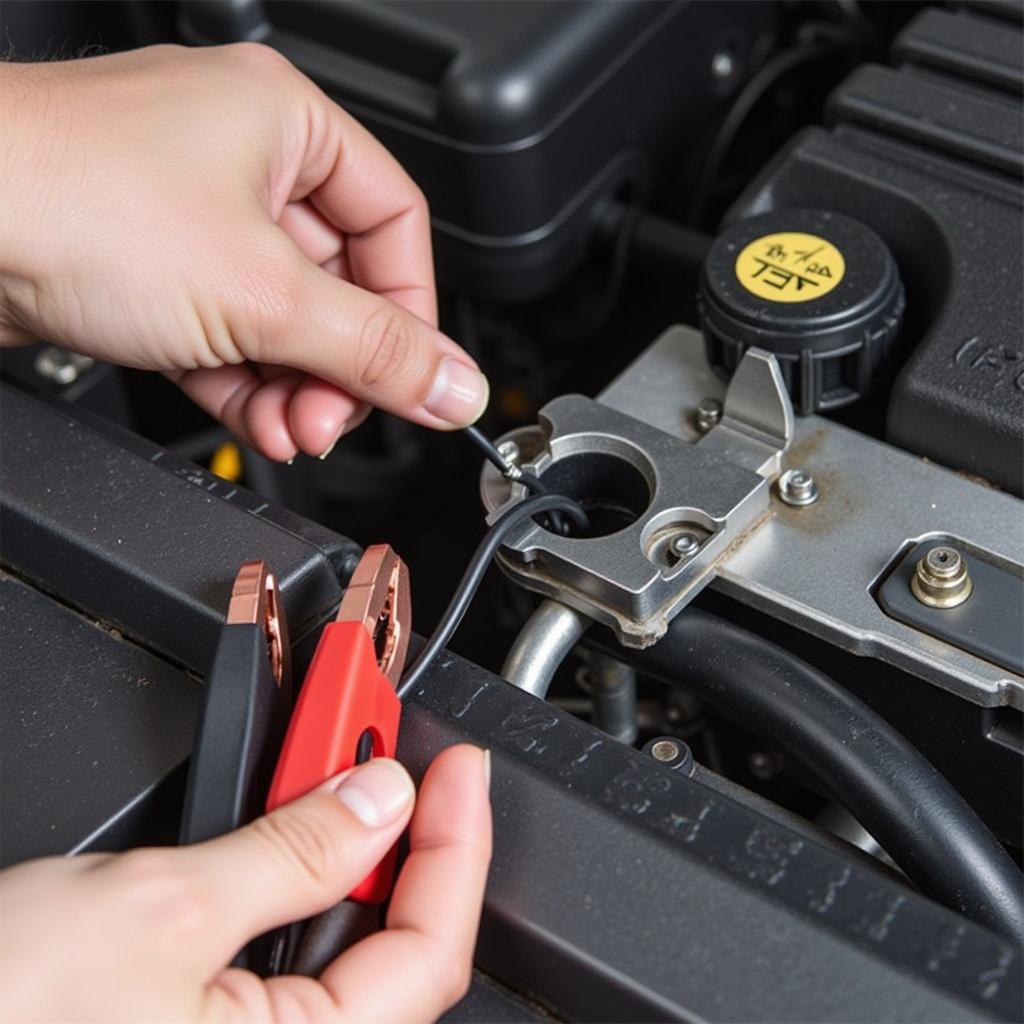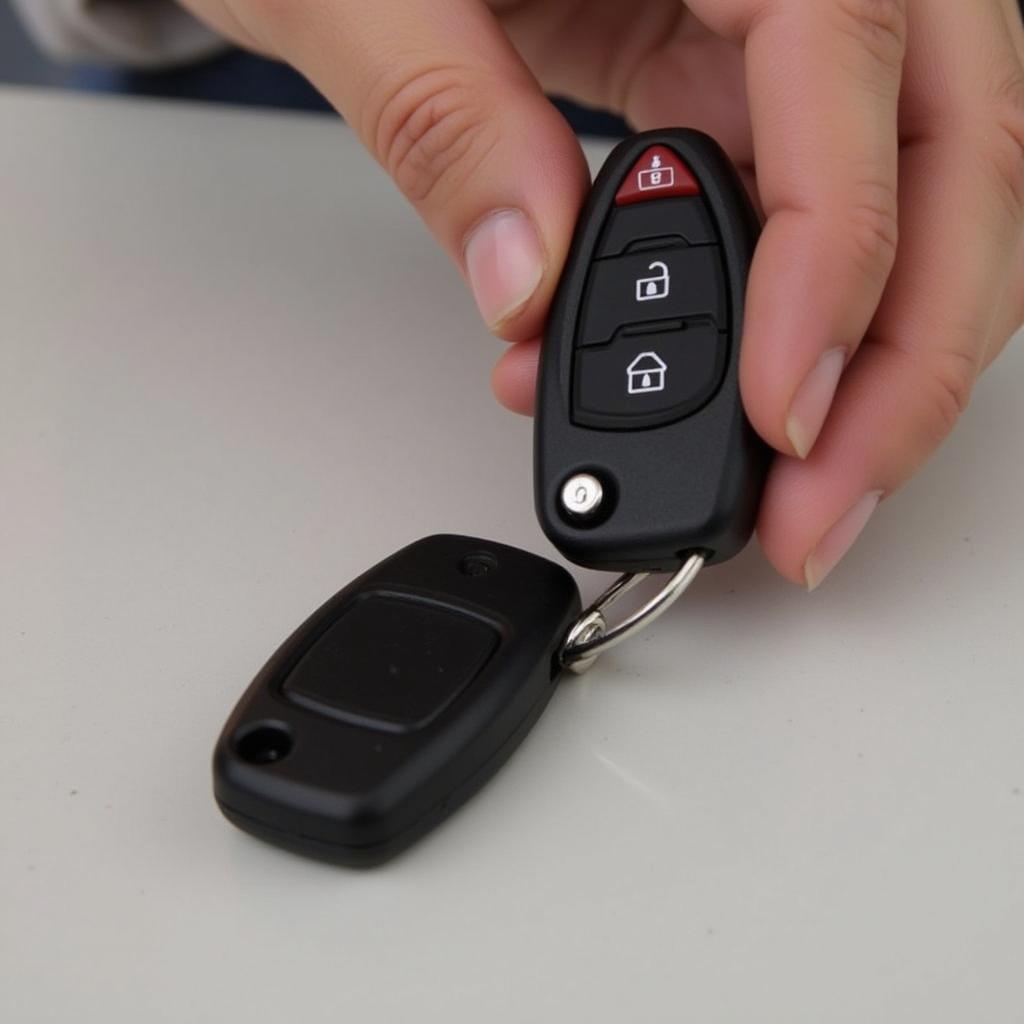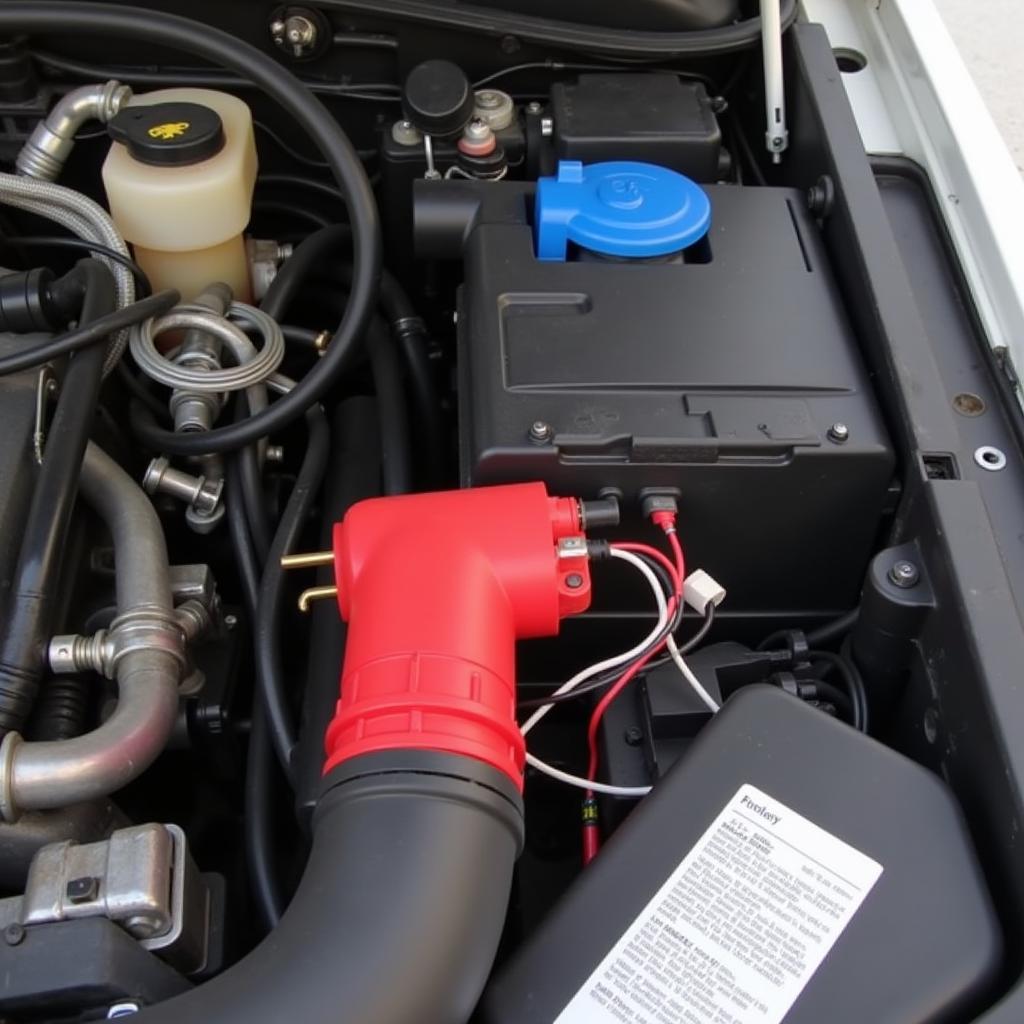Jump-starting a dead battery is a common roadside emergency. Knowing how to charge a dead battery with jumper cables correctly can save you time, money, and potential harm. This guide will provide you with a step-by-step process, safety precautions, and troubleshooting tips to get your car back on the road.
Understanding the Basics of Jump Starting
Before we dive into the process of charging a dead battery with jumper cables, it’s crucial to understand the underlying principles. Essentially, you’re using the live battery of another vehicle to provide a temporary boost to your dead battery. This allows your car’s electrical system to function and the alternator to recharge the dead battery.
Gathering Your Tools and Preparing for the Jump Start
You’ll need a good set of jumper cables – thicker cables are generally better at transmitting power. Also, ensure the “donor” car has a similar voltage system to your vehicle.
Step-by-Step Guide to Jump Starting Your Car
Here’s a detailed guide on how to charge a dead battery with jumper cables:
- Position the vehicles: Park the donor vehicle close to yours, ensuring the batteries are accessible, but the cars aren’t touching.
- Turn off both vehicles: Ensure all accessories, like lights and radios, are off in both cars.
- Connect the red (positive) cable: First, clamp one end of the red cable to the positive (+) terminal of the dead battery. Then, connect the other end of the red cable to the positive (+) terminal of the donor battery.
- Connect the black (negative) cable: Clamp one end of the black cable to the negative (-) terminal of the donor battery. Then, connect the other end of the black cable to a clean, unpainted metal surface on the dead car’s engine block, away from the battery.
- Start the donor vehicle: Let the donor vehicle run for a few minutes to charge the dead battery.
- Start your vehicle: Attempt to start your car. If it doesn’t start immediately, let the donor car run for a few more minutes and try again.
- Disconnect the cables: Once your car starts, disconnect the cables in the reverse order of connection: black cable from the dead car, then the donor car; red cable from the donor car, then the dead car.
 Disconnecting Jumper Cables Safely
Disconnecting Jumper Cables Safely
Troubleshooting Common Jump Starting Issues
What if your car still won’t start? Here are some common issues and solutions:
- Corroded terminals: Clean the battery terminals with a wire brush and baking soda solution.
- Faulty cables: Check the jumper cables for damage. If they are how to turn off brake warning light on ford transit, replace them.
- Dead donor battery: The donor battery might not have enough charge. Try a different donor vehicle.
Maintaining Your Car Battery for Optimal Performance
Regular battery maintenance can prevent future jump-start situations. Keeping the terminals clean and getting your battery tested periodically can significantly extend its lifespan.
Why Knowing How to Jump Start is Essential
Knowing how to charge a dead battery with jumper cables is an essential skill for any driver. It’s a relatively simple process that can save you from being stranded.
“A dead battery can happen to anyone, anywhere. Knowing how to jump start your car can be a lifesaver,” says Robert Johnson, Senior Automotive Technician at Johnson’s Auto Repair.
Jump Starting Safety Precautions
Safety is paramount when jump-starting a car. Always wear safety glasses and avoid touching metal parts of the vehicles while the cables are connected. Never smoke near a battery, as hydrogen gas can be released.
Alternative Charging Methods
If you are ford transit brake pad warning light reset, there are alternative charging methods. Portable jump starters are a convenient option and don’t require a donor vehicle. Battery chargers plugged into a power outlet are another alternative for charging a completely dead battery.
“Portable jump starters are a great investment. They’re compact, easy to use, and can provide multiple jump starts on a single charge,” adds Robert Johnson.
Conclusion
Charging a dead battery with jumper cables can empower you to handle unexpected car troubles. By following the steps outlined in this guide and adhering to safety precautions, you can confidently get your car running again. Remember to prioritize regular battery maintenance to minimize future jump-start situations. Now you’re equipped to tackle that dead battery head-on!
Is your ford transit brake pad warning light on? You can find helpful information at brake pad warning light ford transit. For more information on the 2015 ford transit brake pad warning light reset, check out this helpful guide on 2015 ford transit brake pad warning light reset. You can also learn about ford transit brake pad warning light at ford transit brake pad warning light.
FAQ
- What should I do if my car still won’t start after jump starting?
- Can I jump start a car with a completely dead battery?
- Are there any risks involved in jump starting a car?
- How long should I let the donor car run before trying to start my car?
- How can I prevent my car battery from dying?
- What are the signs of a dying car battery?
- How often should I have my car battery tested?



